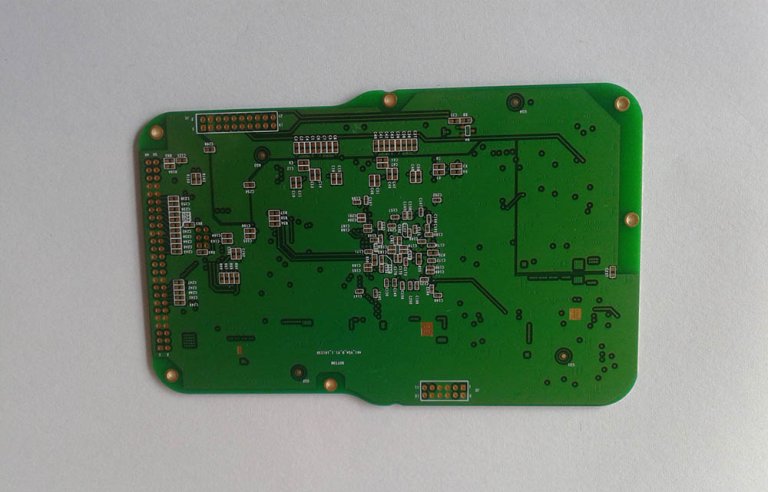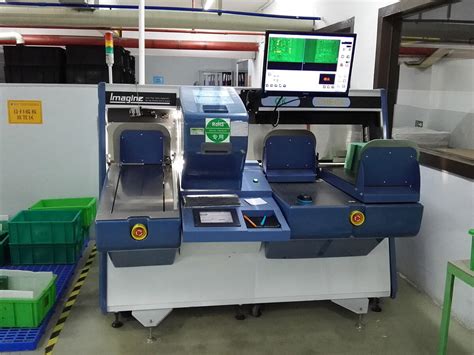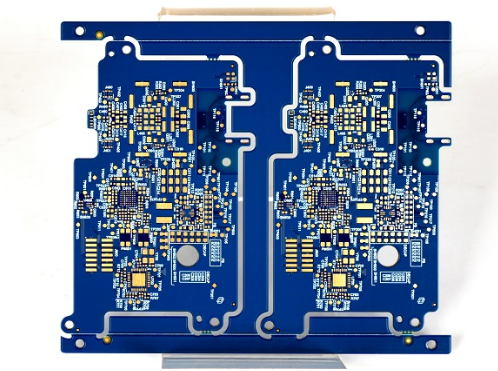Flex pcb surface finish
Advantages Of Using Flex pcb surface finish Surface Finish On Flex PCBs
Electroless Nickel Immersion Gold (ENIG) surface finish has become a popular choice for flexible printed circuit boards (PCBs) due to its numerous advantages.
One of the primary benefits of using ENIG on flex PCBs is its excellent corrosion resistance.
This characteristic is particularly important in applications where the PCB may be exposed to harsh environmental conditions.
The nickel layer acts as a barrier to protect the underlying copper from oxidation, while the thin gold layer provides a reliable contact surface that resists tarnishing. Consequently, ENIG ensures the longevity and reliability of the flex PCB in various demanding applications.
Another significant advantage of ENIG surface finish is its superior solderability.
The gold layer on the surface provides a highly solderable finish, which is crucial for ensuring strong and reliable solder joints. This is particularly important in flex PCBs, where the mechanical stresses can be higher due to bending and flexing. The excellent solderability of ENIG helps to minimize the risk of solder joint failures, thereby enhancing the overall reliability of the flex PCB. Additionally, the uniformity of the ENIG finish ensures consistent soldering results, which is essential for high-volume manufacturing processes.
ENIG also offers excellent electrical performance, which is a critical factor in many electronic applications.
The gold layer provides a low contact resistance, ensuring efficient electrical connections. This is particularly beneficial in high-frequency applications, where signal integrity is paramount. The low contact resistance of ENIG helps to minimize signal loss and maintain the integrity of high-speed signals, making it an ideal choice for advanced electronic devices. Furthermore, the smooth and flat surface of the ENIG finish is well-suited for fine-pitch components and high-density interconnects, which are commonly used in modern electronic designs.
In addition to its electrical and mechanical benefits, ENIG surface finish is also highly compatible with various assembly processes.
The robust nature of the ENIG finish allows it to withstand multiple thermal cycles, which is essential during the assembly and rework processes. This compatibility with thermal processes ensures that the flex PCB can endure the rigors of manufacturing without compromising its performance. Moreover, the ENIG finish is compatible with a wide range of component types and assembly techniques, providing flexibility in the design and manufacturing of flex PCBs.
The environmental and regulatory compliance of ENIG is another important consideration.
ENIG is a lead-free surface finish, making it compliant with the Restriction of Hazardous Substances (RoHS) directive and other environmental regulations. This compliance is crucial for manufacturers who need to meet stringent environmental standards and ensure the safety of their products. By choosing ENIG, manufacturers can produce environmentally friendly flex PCBs without sacrificing performance or reliability.
Lastly, the cost-effectiveness of ENIG surface finish should not be overlooked.
While the initial cost of ENIG may be higher compared to some other surface finishes, its long-term benefits often outweigh the initial investment. The enhanced reliability, superior performance, and extended lifespan of flex PCBs with ENIG finish can lead to reduced maintenance costs and fewer field failures. This, in turn, can result in significant cost savings over the product’s lifecycle.
In conclusion, the use of ENIG surface finish on flex PCBs offers a multitude of advantages, including excellent corrosion resistance, superior solderability, outstanding electrical performance, compatibility with various assembly processes, environmental compliance, and cost-effectiveness. These benefits make ENIG an ideal choice for ensuring the reliability and performance of flexible printed circuit boards in a wide range of applications.
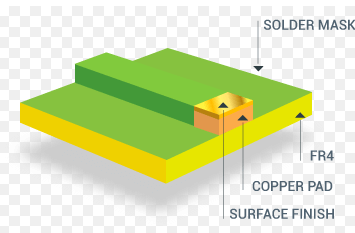
Comparing OSP And HASL Surface Finishes For Flexible PCBs
When it comes to flexible printed circuit boards (PCBs), the choice of surface finish is a critical decision that can significantly impact the performance, reliability, and manufacturability of the final product. Among the various surface finishes available, Organic Solderability Preservative (OSP) and Hot Air Solder Leveling (HASL) are two commonly used options. Each of these finishes has its own set of advantages and disadvantages, making it essential to understand their characteristics to make an informed choice.
OSP is a water-based organic compound that selectively bonds to copper surfaces, providing a protective layer that prevents oxidation.
One of the primary advantages of OSP is its simplicity and cost-effectiveness. The application process is straightforward, involving a simple dip-and-dry method, which makes it an attractive option for manufacturers looking to minimize production costs. Additionally, OSP is environmentally friendly, as it does not involve the use of heavy metals or other hazardous substances. This makes it compliant with various environmental regulations, including the Restriction of Hazardous Substances (RoHS) directive.
However, OSP has its limitations. One of the most significant drawbacks is its relatively short shelf life.
The organic layer can degrade over time, especially when exposed to high humidity or elevated temperatures, which can compromise the solderability of the PCB. This makes OSP less suitable for applications that require long-term storage or extended shelf life. Furthermore, OSP is not ideal for multi-pass reflow soldering processes, as the protective layer can break down after repeated thermal cycles, leading to potential soldering issues.
On the other hand, HASL involves immersing the PCB in molten solder and then using hot air to remove excess solder, leaving a uniform layer on the copper pads.
This process provides excellent solderability and a robust, durable finish that can withstand multiple thermal cycles. HASL is particularly well-suited for applications that require high mechanical strength and reliability, such as automotive and industrial electronics. The finish also offers a long shelf life, making it a viable option for products that may be stored for extended periods before assembly.
Despite its advantages, HASL is not without its challenges.
One of the main concerns is the uneven surface it creates, which can be problematic for fine-pitch components and high-density interconnects.
The thickness of the solder layer can vary, leading to potential issues with planarity and coplanarity, which are critical for reliable solder joint formation. Additionally, the high temperatures involved in the HASL process can cause warping or damage to the flexible PCB substrate, particularly for thinner materials.
In comparing OSP and HASL, it becomes evident that the choice of surface finish depends largely on the specific requirements of the application. OSP offers a cost-effective and environmentally friendly solution with excellent solderability for single-pass reflow processes, making it suitable for consumer electronics and other low-cost applications. Conversely, HASL provides a durable and reliable finish with a long shelf life, making it ideal for high-reliability applications that can tolerate the potential drawbacks of uneven surfaces and higher processing temperatures.
Ultimately, the decision between OSP and HASL should be based on a thorough evaluation of the application’s performance requirements, manufacturing constraints, and cost considerations. By understanding the strengths and limitations of each surface finish, manufacturers can make an informed choice that ensures the optimal performance and reliability of their flexible PCBs.
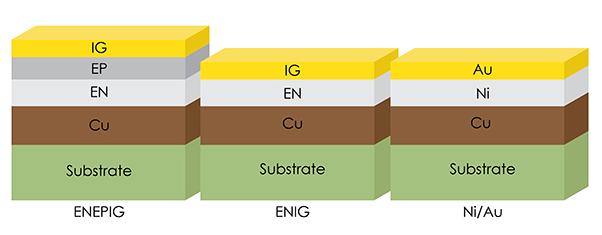
The Role Of Immersion Tin In Flex PCB Manufacturing
In the realm of flexible printed circuit board (PCB) manufacturing, the choice of surface finish plays a pivotal role in determining the performance, reliability, and longevity of the final product. Among the various surface finishes available, immersion tin has emerged as a significant option due to its unique properties and benefits. Understanding the role of immersion tin in flex PCB manufacturing requires a comprehensive examination of its characteristics, application process, and the advantages it offers over other surface finishes.
Immersion tin is a type of surface finish that involves the deposition of a thin layer of tin onto the copper traces of a PCB through a chemical immersion process.
This method ensures a uniform and consistent coating, which is crucial for maintaining the integrity of the circuit. The immersion tin process begins with the thorough cleaning of the PCB to remove any contaminants that could interfere with the adhesion of the tin layer. Following this, the board is immersed in a tin-based solution, where a chemical reaction occurs, resulting in the deposition of tin onto the exposed copper surfaces.
One of the primary reasons for the adoption of immersion tin in flex PCB manufacturing is its excellent solderability.
The tin layer provides a highly solderable surface, which is essential for creating reliable solder joints during the assembly process. This is particularly important in flexible PCBs, where the mechanical stresses and strains can be more pronounced compared to rigid PCBs. The superior solderability of immersion tin helps ensure that the solder joints remain robust and durable, even under the flexing and bending conditions that flexible PCBs are often subjected to.
Moreover, immersion tin offers a flat and smooth surface finish, which is advantageous for fine-pitch components and high-density interconnects.
The uniformity of the tin layer minimizes the risk of bridging and other soldering defects, thereby enhancing the overall quality and performance of the PCB. Additionally, the flat surface provided by immersion tin is beneficial for automated optical inspection (AOI) processes, as it allows for more accurate detection of defects and anomalies.
Another significant advantage of immersion tin is its compatibility with lead-free soldering processes.
As the electronics industry continues to move towards environmentally friendly and RoHS-compliant manufacturing practices, the use of lead-free solder has become increasingly prevalent. Immersion tin is well-suited for lead-free soldering, as it can withstand the higher temperatures required without degrading or compromising the integrity of the solder joints.
Furthermore, immersion tin provides excellent protection against oxidation and corrosion, which are common concerns in flexible PCBs due to their exposure to varying environmental conditions. The tin layer acts as a barrier, preventing the underlying copper from oxidizing and ensuring the long-term reliability of the electrical connections. This protective quality is particularly valuable in applications where the flex PCB may be exposed to harsh or fluctuating environments.
In conclusion, immersion tin plays a crucial role in flex PCB manufacturing by offering a combination of excellent solderability, a flat and smooth surface finish, compatibility with lead-free processes, and robust protection against oxidation and corrosion. These attributes make it a preferred choice for many manufacturers seeking to produce high-quality, reliable, and durable flexible PCBs. As the demand for flexible electronics continues to grow, the importance of selecting an appropriate surface finish like immersion tin will remain a key consideration in the pursuit of advanced and dependable electronic solutions.

How To Choose The Best Surface Finish For Your Flex PCB Design
When designing a flexible printed circuit board (flex PCB), one of the critical decisions you will face is selecting the appropriate surface finish. The surface finish plays a pivotal role in the performance, reliability, and manufacturability of the flex PCB. Therefore, understanding the various options available and their respective advantages and disadvantages is essential for making an informed choice.
To begin with, it is important to recognize that the surface finish serves multiple functions. It protects the exposed copper circuitry from oxidation and corrosion, ensures solderability during assembly, and can even impact the electrical performance of the PCB. Given these multifaceted roles, the selection process should be approached with careful consideration of the specific requirements of your application.
One of the most commonly used surface finishes is Hot Air Solder Leveling (HASL).
HASL involves immersing the PCB in molten solder and then leveling it off with hot air. This method is cost-effective and provides a robust solder joint. However, it is not ideal for fine-pitch components or high-density interconnects due to its uneven surface. Additionally, the thermal stress involved in the HASL process can be detrimental to the flexible substrate, making it less suitable for flex PCBs.
Electroless Nickel Immersion Gold (ENIG) is another popular choice, particularly for applications requiring a flat and smooth surface. ENIG consists of a layer of nickel followed by a thin layer of gold. This finish offers excellent solderability, corrosion resistance, and is suitable for fine-pitch components. However, it is more expensive than HASL and can suffer from a phenomenon known as “black pad,” which can lead to reliability issues if not properly managed.
For applications where cost is a significant concern, Organic Solderability Preservative (OSP) can be an attractive option.
OSP is a water-based organic compound that selectively bonds to copper, providing a protective layer. It is environmentally friendly and cost-effective. However, OSP has a limited shelf life and may not be suitable for multiple reflow cycles, which can be a drawback in complex assembly processes.
Immersion Tin and Immersion Silver are also viable alternatives.
Immersion Tin provides a flat surface and good solderability but can be prone to whisker growth, which can cause short circuits. Immersion Silver offers excellent electrical performance and is suitable for high-frequency applications. However, it is susceptible to tarnishing and may require additional handling precautions.
Considering the specific requirements of your flex PCB design is crucial in making the right choice.
For instance, if your design involves high-density interconnects or fine-pitch components, ENIG might be the most suitable option despite its higher cost. On the other hand, if cost is a primary concern and the design does not involve multiple reflow cycles, OSP could be a viable alternative.
In conclusion, selecting the best surface finish for your flex PCB design involves a careful evaluation of various factors, including cost, solderability, reliability, and the specific requirements of your application. By understanding the advantages and limitations of each surface finish option, you can make an informed decision that will enhance the performance and reliability of your flex PCB.

